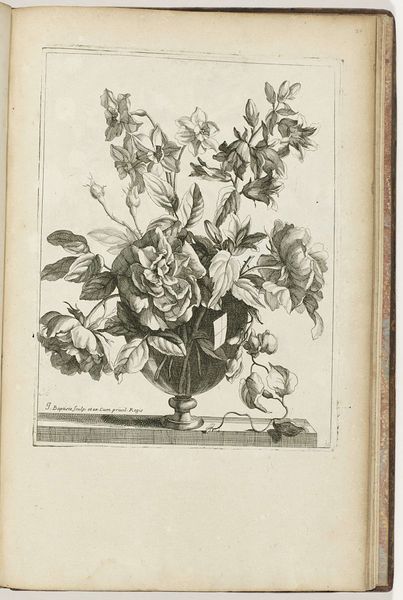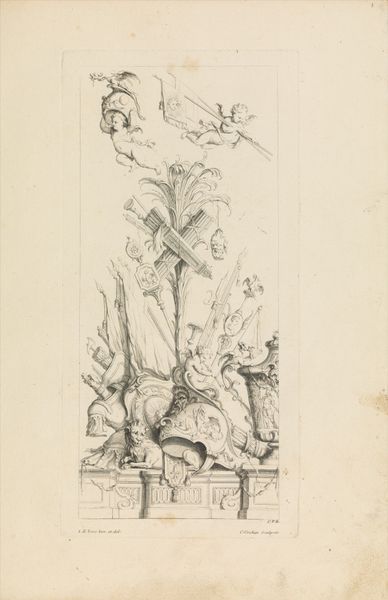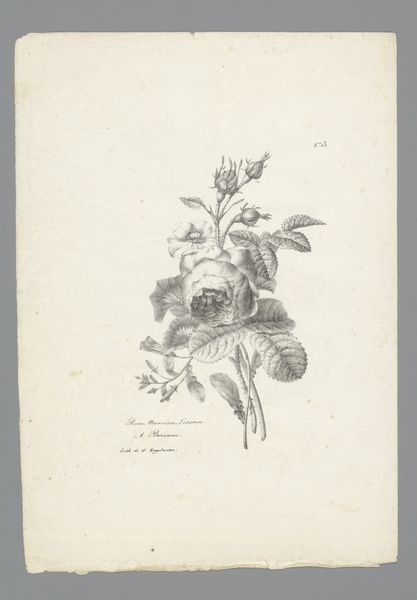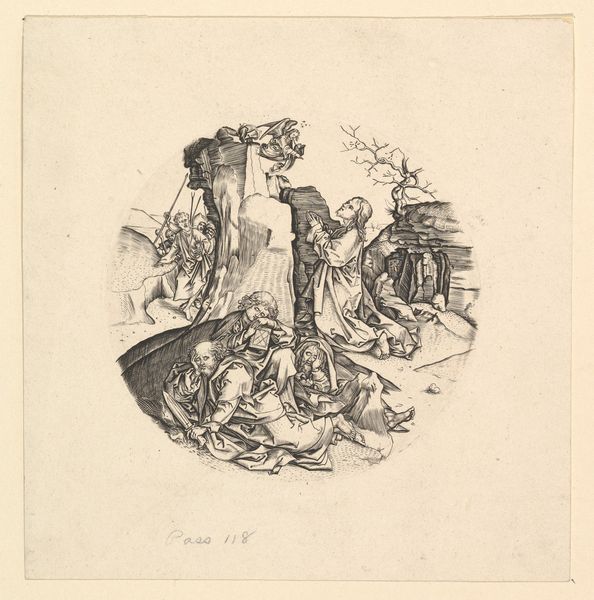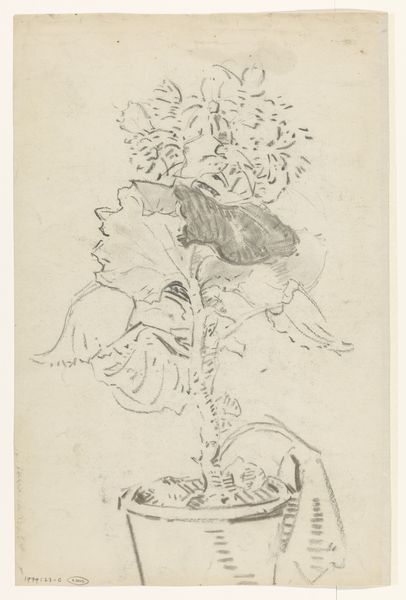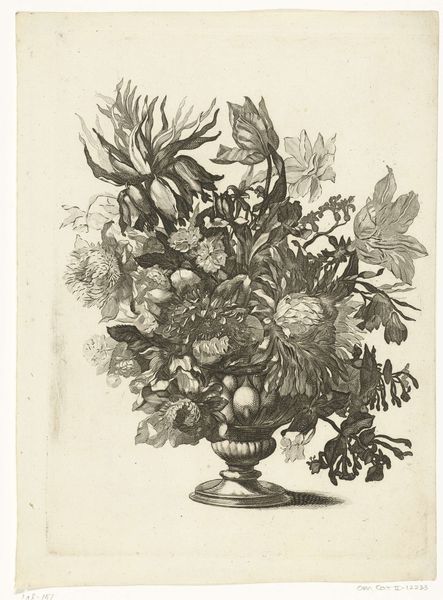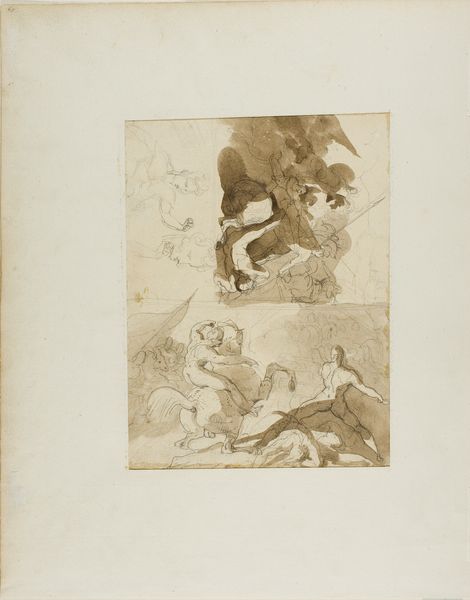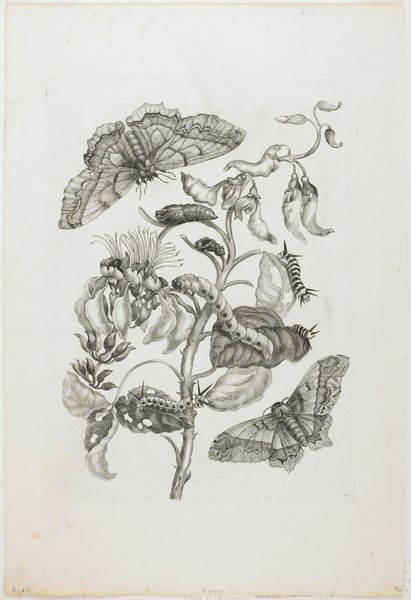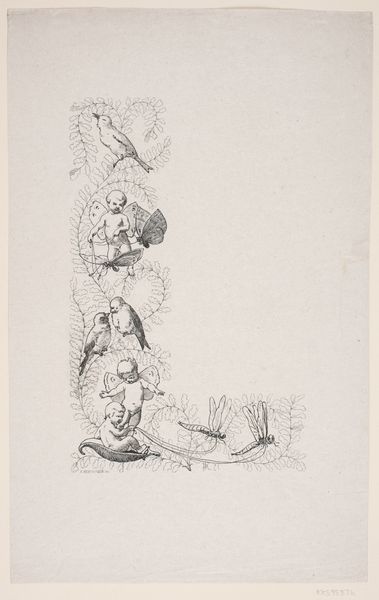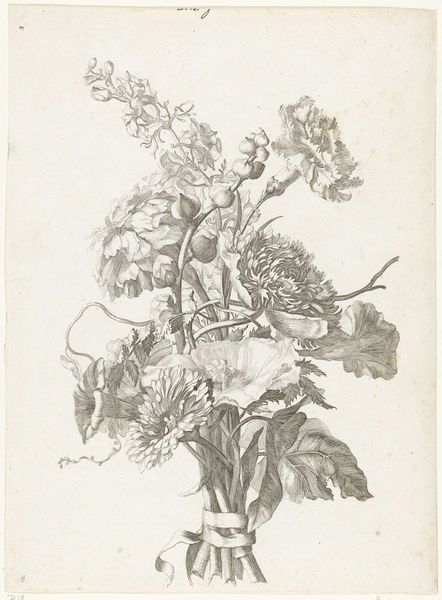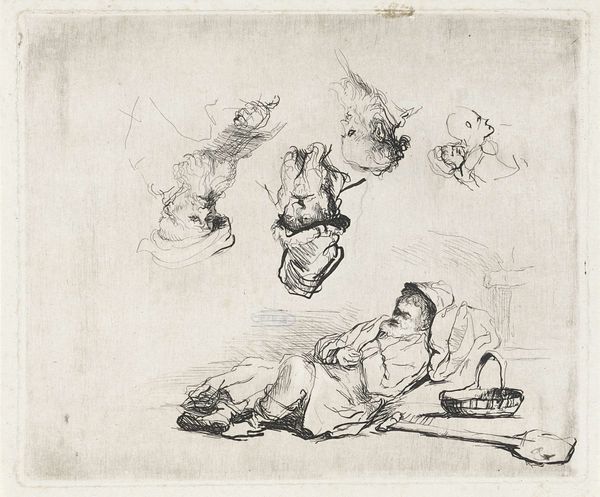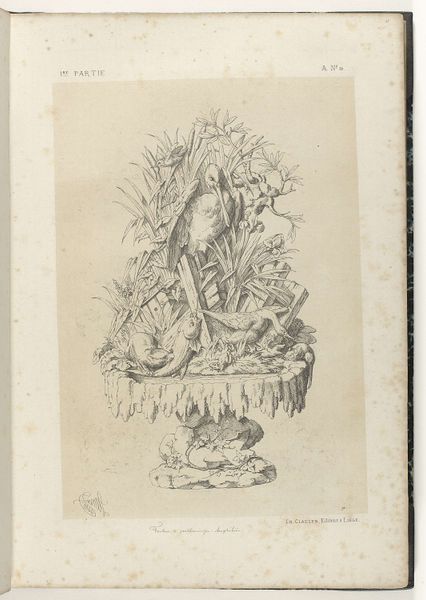
drawing, lithograph, print, etching, paper
#
drawing
#
lithograph
# print
#
pen sketch
#
etching
#
etching
#
paper
Copyright: Public Domain
Curator: Welcome. Before us is a piece entitled "Flower Piece," a lithograph, etching, and drawing on paper by Johann Nepomuk Mayrhoffer. It currently resides here at the Art Institute of Chicago. Editor: My first impression is that it feels... delicate. It has this faded beauty, like a pressed flower found in an old book. There's something so beautifully melancholic about the fragility of the lines. Curator: Lithography and etching processes like these were often used to reproduce botanical illustrations for scientific and artistic purposes in the 19th century. These printmaking techniques allowed for detailed depictions of flowers, popular among both scientific circles and artistic circles that focused on depicting the beauty of the natural world. Editor: Yes, there's an almost scientific precision, but tempered with real tenderness, you know? Look at the textures – the wilting petals, the way the leaves droop. I'd guess it feels right at home among studies of natural phenomena and old books with detailed cross sections of plant-life. Curator: The piece invites contemplation on the role of art and nature, and their interactions in social and cultural perception of both, wouldn't you agree? The flowers depicted aren't some idealized bouquet; instead, there's an emphasis on decay and entropy... Editor: Absolutely. And the framing, the lines around the flowers... it suggests that perhaps these beauties are captured, specimens meant for consumption or display. We should admire it before it's gone. Makes one wonder how we collect, classify, and contain nature – and, by extension, art. Curator: It highlights our complex relationship with the natural world. We seek to control, understand, and even immortalize it, yet the very act of doing so often leads to its demise, whether literal or artistic. A somber yet accurate lens with which to reflect on our shared cultural tendencies, isn’t it? Editor: Yes! What begins as observation quickly morphs into participation. What are we, if not mere containers as well, after all? Curator: A worthwhile meditation. Thank you for offering your perceptive experience. Editor: My pleasure. I’m grateful to share a fresh perspective on the conversation, hopefully shedding light onto Mayrhoffer's detailed observation.
Comments
No comments
Be the first to comment and join the conversation on the ultimate creative platform.
